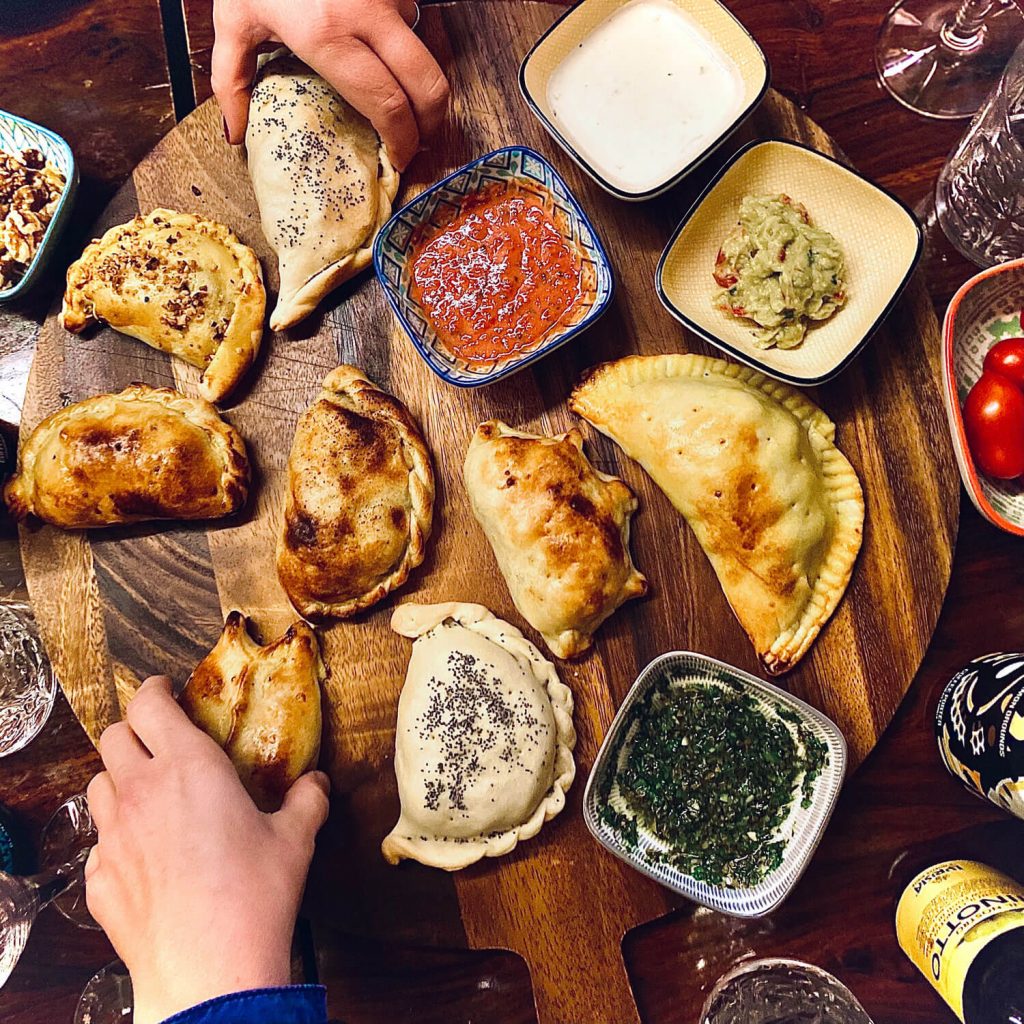
By Mathias
Step 1: Get the ingredients
On the granite countertop in front of me sat a pile of flour, two sticks of butter, and a bowl of shredded beef, just like the YouTube tutorial showed. My mind contorted itself as I tried figuring out what I was doing. Flanking me were two equally discombobulated partners from my Spanish class. Somehow, some way, the amalgamation of ingredients before us would have to be transformed into Peruvian empanadas.
Step 2: Prepare the ingredients
It looked easy enough. Just make a dough, cook the beef until it was tender, put two and two together, and fry them. What YouTube didn’t show was how to season the meat or how long you should cook it. We had to put this puzzle together by ourselves. Adding to the mystery, none of us knew what an empanada should even taste like.
Step 3: Roll out ten equally sized circles of dough
It would be dishonest to say everything went smoothly. I thought the dough should be thick. One team member thought it should be thin. The other thought our circles were squares. A fundamental truth about collaboration is that it’s never uncontentious. Everyone has their own expectations about how things should be done. Everyone wants a project to go their way. Collaboration requires observing the differences between the collaborators and finding a way to synthesize everyone’s contributions into a solution that is mutually agreeable.
Step 4: Cook the beef until tender
Collaborative endeavors are the proving grounds for Murphy’s Law: everything that can go wrong, will go wrong. The shredded beef, which was supposed to be tender, was still hard as a rock after an hour on the stove. With our unseasoned cooking minds, all ideas were valid. Put more salt in? Sure. Cook it at a higher temperature? Go for it. Collaboration requires people to be receptive. It demands an open mind. All ideas deserve consideration.
Step 5: Fry the empanadas until crispy
What does crispy even mean? How crispy is crispy enough; how crispy is too crispy? The back and forth with my teammates over everything from how thick the dough should be to the definition of crispy taught me a key ingredient of teamwork: patience. Collaboration breeds tension, which can make teamwork so frustrating. But it’s that very tension which also transforms differing perspectives into solutions that propel collaborative undertakings forward.
Step 6: Enjoy!
Admissions Committee Comments
Mathias is able to describe important aspects of collaboration, such as considering new ideas and finding a way to synthesize everyone’s input. Through the metaphor of cooking empanadas as a novice, his essay effectively conveys the message that collaboration ‘demands an open mind’ and that by being receptive to other opinions, tackling any kind of puzzle—whether culinary or academic—becomes more doable. This tells us that, as a student, Mathias values the contributions of his peers and strives to bring people and ideas together to accomplish obstacles.





